Escape to the Winter Wonderland – Auli
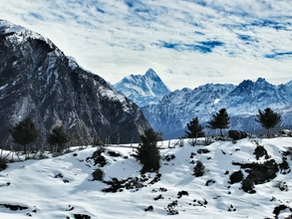
From snow-covered peaks to wooden huts, Auli is not less than a perfect European village. It is encircled by coniferous and oak woods, with a panoramic view of the Himalayan peaks. The slopes are perfect for both expert skiers and novices. Auli has everything that an ideal tourist dreamed for like, Himalayan Views, Meadows, adventure activities, and much more. Photo by Amit Shaw on Unsplash How to reach By Air: The nearest airport to Auli is the Jolly Grant Airport, about 280 km. One can take a bus or a taxi from here to reach Auli. By Rail: The Rishikesh Railway station, 250 km away is the nearest railway station to reach Auli. By Road: Joshimath is the base point of Auli which is very well connected with all the major cities like Delhi, Dehradun, Rishikesh, etc. You can hire a taxi, bike, state own buses, or private buses to reach Joshimath. From Joshimath, you have to use a cable car or you can trek to reach Auli. Photo by Aniket Mandish on Unsplash Best time to visit Auli can be visited throughout the year. But, if you want to experience snow-skiing, then December to February is the best time. The deep blue winter skies, clouds surrounding the hills, with the snowy meadows all around, simply awaken your senses and your soul. However, if you want to get relief from the intense heat waves the best time to visit is from April to June. In summers, the weather remains pleasant and the snow-covered mountains turn to green meadows that offer a picturesque view of the surrounding. Here are some experiences you do not want to miss out on while in Auli. Read more about the travel experience from Auli in the blog written by Vargis Khan. Relax at Chenab Lake Chenab lake is a lesser-known artificial crystalline lake, surrounded by the lush green forests of oak and deodar, coupled with a few river streams. It has a relaxing atmosphere and is the best place for serenity, still unexplored and untouched. The area is almost inaccessible by vehicles. The best way to explore this unexploited beauty is by trekking or setting a camp amidst the greenery, making it a perfect spot for adventure. Visit Nanda Devi National Park Nanda Devi National Park is a biosphere reserve emplaced around the Nanda Devi peak. The park highlights an extraordinary assortment of widely varied flora alongside terrific presentations of nature. It gloats about the rich floral species like birch, juniper, fir, and different others that you can notice while visiting this quarter. It also has a wide fauna arrangement that incorporates panther, wild langur, earthy colored bear, Himalayan musk deer, and a few other remarkable avifauna networks. This land is a true fortune for you. Cable-Car ride from Joshimath to Auli The ropeway from Joshimath to Auli, also known as Gondola, is one of the major attractions in Auli. It is the highest and longest ropeway in India covering a distance of 4 km in 15 – 20 mins. It offers magnificent and majestic views of the Himalayas. Moving at a speed of 3 meters per second, you can enjoy the view of snow-capped peaks in front and the oak forests and verdant green meadows below. Explore Malari village Malari village, also known as the ‘Mini Tibet of Uttarakhand’ is a small village near the Indo – Tibetan border in Uttrakhand. The beauty of the mountains alongside the interesting Himalayan homes with their unique architecture in the slate roofing of old houses will leave you mesmerized. Surrounded by the snow-capped mountains, the Village is inhabited by the Indo-Mongolian tribes known as Bhotia. The valley of perfumes located near this village is home to many types of blossoms, all amounting to make for the most superb of smells. Trek to Gorson Bugyal Gorson Bugyal is a beautiful lush meadow, an ideal trekking destination, surrounded by oak forests and high mountain peaks. It is a 3 km trek from Auli, also famous for skiing. The soft grass and the mesmerizing scenery make it perfect for camping, relax in the sun by day, and sleep under the stars by night. During winters the meadow is covered in thick layers of snow attracting tourists for a winter trek, although the spring season is considered the best time for trekking here for all the greenery and scenic view it offers. Climb up Trishul Peak Trishul is a group of three Himalayan mountain peaks that are in the shape of Trident, a weapon of Lord Shiva. It is one of the most famous and challenging climbs for a trekking enthusiast, only meant for experienced trekkers and not beginners. Trishul is also popular for providing skiing slopes and is among one of the few places where skiing is practiced at a professional level. This place is also known for having the Nanda Devi national park and Roopkund, a spiritual lake at its foot. Skiing in Auli Skiing right through the snow-covered forests of the Himalayan range feels highly thrilling. Skiing is one of the foremost activities in Auli. The extensive snow blankets, and high slopes that rise to an altitude of 3 kilometers along with the strong winds lift the thrill quotient of skiing in Auli. This place is also considered as one of the world’s best skiing destinations in the world and one of the best things to do in Auli. Stroll around Chattrakund Lake Chattrakund Lake is located at a distance of about 4 kilometers from Auli in the middle of a jungle and a small sweet water lake that reflects the blue sky on sunny days. It looks astoundingly beautiful. This lake is easily reachable by road and you can spend hours dozing around it. Kuari pass trek Kuari pass has been attracting thousands of tourists from all over the country and the credit goes to its unparalleled beauty. It is surrounded by mesmerizing views
Changing travel trends amidst covid-19
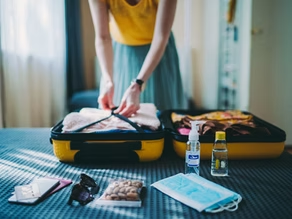
Just when we started to believe that things were going back to normal, the second wave of coronavirus hit us hard and harder this time. This raises the question that, are things ever going to be normal again? We are stepping ahead into an uncertain future, and the travel industry is preparing for the new era of travel, where everything will be changed and brand-new. Here are some of the changing trends driving the future of travel post covid. Domestic travel over international travel Domestic travel gained a lot of momentum during the pandemic, and this trend is here to stay. Keeping in mind the shorter distance, domestic travel is a safer choice. Also, looking at the current situation, international travel will be more expensive, making domestic travel an ideal choice. Staycations Staycation is when an individual or family stays at home and takes part in leisure activities at places within the day trip distance from home. People are starting to prefer staycations in their own city or hill stations and beaches close to the city, over long holidays as a means to ensure their safety. You can experience a slower pace of life while being close to your home. Road trips over local transport With social distancing being the new normal, the rise of public transport is going to be very hard. Road trips are a safer option to take up. People prefer taking their own car, or private taxis to avoid physical touch. Growth of sustainable and slow travel With the rapidly deteriorating environmental conditions, more and more people have become more conscious and are now undertaking steps to mitigate the impact of their travel. Travelers are looking for richer immersive travel experiences to unwind, explore, and connect with nature instead of just rushing around and seeing many places. Digital travel experience Amidst the pandemic, many hotels and resorts made a shift to the digital world to ensure that all guest needs were met virtually to create a safe environment for the travelers as well as the working staff. The digital experience has been transformational for leisure and business travelers, and this experience trend is digging in for the long haul. Many operation-related activities are going to be digitized, enabling contactless services. Homestays gaining popularity There’s been a growing demand for long-term homestays. With offices shut and the rise of remote work, many are leaving their home offices for the chance of working from a picturesque wellness holiday destination. Once-remote lodges, low-cost hostels, and luxury villas that prided themselves on being off the grid are amping up internet speeds and offering free wi-fi and backup data dongles with their rooms. Solo travel pacing up Another major change the pandemic has brought into people’s life is the importance of self-discovery and personal growth. Travelers are looking for more ways to spend quality time with themselves. Moreover, solo traveling also reduces the chance to get infected and gives you complete control over the itinerary. The pandemic has changed the way we travel as new travel trends continue to rise. We must adapt to them, but also at the same time take proper precautions, practice social distancing, wear masks at all times, wash our hands regularly. STAY HOME, STAY SAFE!
SOUL SEARCHING EXPERIENCES IN RISHIKESH YOU CAN’T-MISS
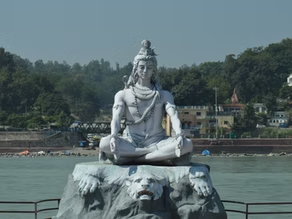
Looking for a way to calm your mind with relaxing places and explore the ancient Indian culture, Rishikesh is the perfect travel destination for you. Located in the foothills of the Himalayas, often known as the “Yoga Capital of the World“, Rishikesh is popular for attracting tourists from all across the globe. The powerful flow of the holy Ganges has always attracted those seeking direction and inspiration from devout Hindus, yoga and meditation gurus, and even the Beatles. How to reach By Road: The road connectivity to Rishikesh is quite accessible and commutable. As it is situated 245 km from New Delhi, 50 km from Dehradun, and just 30 km away from Haridwar, You can easily find buses or taxis from these major cities to Rishikesh. By Rail: The Rishikesh Railway Station provides decent connectivity to travel here. However, Haridwar Railway Station is suggested as the best option to travel Rishikesh by train as this railway station connects with Delhi, Rajasthan, Amritsar, Varanasi, etc. By Air: There are sufficient daily flights from New Delhi to Dehradun available. The nearest airport to Rishikesh is Dehradun Jollygrant airport which is just 25 km away from Rishikesh. Many airlines provide daily flights to Dehradun. Best time to visit Rishikesh holds an evergreen destination and spectacular views throughout the year. However, the right time to visit Rishikesh is from August to March. In summer, with a temperature of 35 degrees Celsius in May-June, it can be bothering. Here are some great things to do in Rishikesh to explore its rich ancient culture and have a soulful experience you do not wish to miss out on. Witness the Ganga Aarti With an auspicious atmosphere, you can sit at the banks of the Ganges river and rejoice in the music, the appeasing breeze, and enjoy the evening Aarti Ceremony at Parmarth Niketan or Triveni Ghat. The evening starts with the chanting of devotional songs (bhajans) accompanied by prayers and a purifying ritual called “hawan”. Concluding the ceremony is the act of the “aarti”—where the ashram residents and the spectators send an offering to the Ganges by floating a small diya laden with flowers and a lighted lamp, into the River Ganga. Yoga and Meditation Rishikesh, enriched with old customs and legacy of Yoga and Meditation, gives you a unique opportunity to mitigate your whole self. There are lots of Yoga and Meditational centers in Rishikesh where you can become familiar with its strategy, meetings by incredible specialists and saints. Delightful nature, fantabulous surroundings, mountain ranges, and India’s most heavenly waterway the Ganges what else would you want to feel a tranquil bond with nature having such an amazing experience and appreciate this city. Visit the Holy Temples Rishikesh is full of countless small, big, new, and very old temples, spread in the mean streets of the city. Aside from regaling at the elaborate architectural designs, these temples ushers in a soulful experience, especially if you get a chance to witness an ongoing religious activity inside the temple. Some of the important temples in Rishikesh are as follows. Tera Manzil Temple: It is a multistory temple that is extremely popular among tourists. The temple has several deities under one roof with amazing architecture to behold. Here you can capture an unforgettable view of sundown from the top of the temple. Kunjapuri Temple: Kunjapuri Devi Temple is a sacred temple of intense importance in the Hindu religion, devoted to Goddess Durga. Situated at a height of 1676 meters from sea level on a hill, this Temple is also considered by Shaktipeeth. Bharat Mandir: Bharat Mandir is one of the very old temples among the all which is constructed by the Hindu famous saint Adiguru Shankracharya in the 12th century. This temple is devoted to Bharat, the younger brother of Lord Ram; it is to be found in the old town next to Triveni Ghat. Nilkanth Mahadev Temple: Nilkanth Mahadev temple is one of the very famed temples which is positioned at a height of around 5500 ft. The splendid architecture of the temple will stun you with its fine detail. Outside the temple, you will find several stalls stocking memoirs and Pooja ingredients. Explore the street markets The city, with hills on either side, is connected by two suspension bridges known as Ram Jhula and Lakshman Jhula. The markets around both these bridges are crowded with shops selling beads, precious stones, local handicraft items, and puja items. You can bring many interesting things from here like; Spiritual books, Jewellery, clothes, gems, precious and semi-precious stones, idols and other great items too. Enjoy the festivals Rishikesh, being a holy pilgrimage site, celebrates the usual Hindu festivals like Holi, Diwali, and Dussehra with great enthusiasm and love. The month of Sawan is also considered of great significance here. Rishikesh is also an ideal spot for some grand International and National Festivals like International Yoga Festival – an annual festival celebrated from 1st to 7th March every year to give knowledge about yoga, International Kayak Festival – organized to promote water activities on the Ganges, Basant Panchmi – a harvest festival, Ganga Dussehra – an annual festival celebrated in the month of May-June to celebrate and worship the River Ganges. Volunteer and travel Rishikesh is famous for its culture and spirituality. People travel here for sightseeing and pilgrimage. But, have you ever thought about adding value to society and experiencing the real taste of the city’s culture? Many volunteering opportunities available here let you have this unique experience. Teaching: You can volunteer at an NGO providing formal education to children from slum areas teaching them various subjects, art and music skills, sports, etc. As a foreigner, you can also introduce them to the culture of your country. Some NG0s providing this experience are Khushi Charitable Society, Children of the Ganges, Mother Miracle, etc. Cleaning up River Ganges: Pollution is severely chipping away at India’s beauty. The Ganja river
JIM CORBETT NATIONAL PARK – A WALK THROUGH THE WILDERNESS
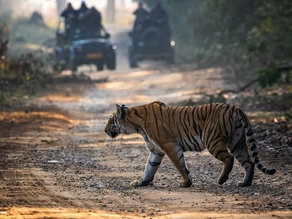
Indian forest land contains numerous delightful and hidden secrets standing by to be uncovered before those who venture deep inside. Corbett National Park is one of these valuable pearls of Indian timberlands that welcomes everybody to encounter the mesmerizing landscapes and the astonishments hidden inside. The transparent greenery, thriving plants, wildlife, and birdlife, and presence of two streams, Kosi and Ramganga make Jim Corbett a jewel of a spot to explore. HOW TO REACH By Road: An extensive system of roads ensures connectivity to major cities like Nainital, Haridwar, Dehradun, and Delhi. Volvo and regular buses offer transfers to Jim Corbett national park from these cities. One can also drive down to Jim Corbett national park on their own vehicle. By Rail: The nearest railway station is Ram Nagar which is well connected with major cities such as Nainital, Delhi, and Bareilly. The distance of Ramnagar railway station to the national park is only 15 km. By Air: The closest airport to Jim Corbett national park is the Pantnagar airport. It is located at a distance of 50 kilometers away from Jim Corbett national park and one can hail a taxi to reach Jim Corbett national park from the airport. BEST TIME TO VISIT The best months to plan your visit to Jim Corbett national park is from December to February. The temperature reaches a pleasant maximum of 20 degrees and a cold minimum of 5 degrees during these months. It is easier to spot animals in the winter season. The Jim Corbett National Park offers a plethora of activities to its visitors. Here are some of the activities you do not want to miss out on. JUNGLE SAFARI The best way to explore any national park is through a safari. Jim Corbett is a prime destination for Jungle Safari. It takes you through the untamed wilderness of the area where you get a chance to witness the remarkable flora and fauna of the area. Corbett Tiger Reserve offers various day visit zones for a memorable experience to view the wildlife and the flora in its unspoiled natural habitat. The 5 major zones are Bijrani, Dhikala, Jhirna, Dhela, and Durga Devi. During the safari, you can spot the famous Bengal tigers, Himalayan black bears, several kinds of deer, elephants, leopard cats, as well as the Indian Python. Jeep Safari To enjoy the best moment during the 3 hours safari, going for a jeep safari is the best option to spot the Bengal tigers. It is a fast and convenient way to enjoy the game drive and discover the wilderness and varied species of flora & fauna. There are only 6 people allow in Jeep safari along with the naturalist guide. The best thing with a jeep safari is that during spotting the tiger you will stop or taking breaks anywhere any time which increases the chances of spotting the wild animals. Timings: Morning – 5:30 a.m. to 9:00 a.m., Evening – 1:30 p.m. to 5:00 p.m. Zones: Bijrani, Sitabani, Durga Devi, Dhela, Sitabani, and Jhirna Cost: Indian – INR 4500/- per jeep, Foreigner – INR 8000/- per jeep. Elephant Safari Elephant safari is the most ideal way to experience the wilderness by an unconventional route. This safari permits you to involve deeper into the wild and get an opportunity to draw near to the untamed life creatures without any dread. Elephant safaris are considered to be some of the most exclusive experiences to be enjoyed around the Jim Corbett National park. There are only 4 people allowed on one elephant. Timings: Morning – 6:30 a.m. to 10:00 a.m., Evening – 1:30 p.m. to 5 p.m. Zones: Reserve forest area Cost: Indian – INR 3200/- per elephant Canter Safari Canter safari is quite popular at Jim Corbett national park. It comprises a vehicle that can accommodate a good number of 18 people at once. It is perfect for a large group of family, friends, or corporate groups. The pathway of this safari is mystic and blessed with a great ambiance that will excite the tourists that take up this safari. Only the Dhikala zone offers the facility of a canter safari. The best part about a canter ride is having a larger group to enjoy the richness of this wonderful location enhances the safari experience. Timings: Morning – 6:00 a.m. to 11:30 a.m., Evening – 12:00 p.m. to 5:30 p.m. Zones: Dhikala Cost: Indian – INR 1500/- per adult, Foreigner – INR 3000/- per adult. How to book a safari The best option to book your safari is the online process. It is always advisable to book your safari in advance through the help of travel agents, hotels, or an Online booking website (www.onlinecorbettsafari.in). RIVER RAFTING AT KOSI River rafting is fun, adventure, and provides a great experience for life. Besides the terrific adventure, it also offers breath-taking scenery of snow-capped mountains, verdant green valleys, etc. Koshi River at Jim Corbett offers river rafting and tubing. There are many experienced scouts and instructors available who are qualified and will ensure that you have a safe experience that is also full of adventure. Best Time to Do: July – September Cost: INR 850 per person CAMPING Another exciting activity to enjoy in Jim Corbett National Park is camping. Camping is conducted in the periphery of Corbett National Park in a village called Syat. The activity is hosted near natural beauty and wildlife while you stay in the safe zone. You can choose your preferred accommodation from tents, bamboo huts, and Machaans. The experience is totally worth it. One feels closer to nature and it is utterly blissful. Best Time to Do: September – March Cost: Variable TREKKING One of the most interesting things to do in Corbett is exploring the place on foot and what better way than trekking! Sitabani is the perfect zone for trekking since it is a densely populated forest area where one might come across elephants,
NAG TIBBA TREK – A THRILLING WEEKEND SUMMIT
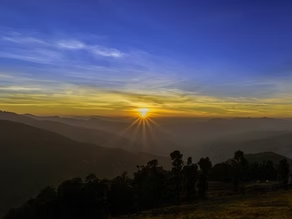
Want to experience the thrill of a summit climb in just a weekend? If yes, Nag Tibba trek is just what you are looking for. Resting at 9,915ft, the summit to Nag Tibba – the highest peak in the Shivalik range of the Garhwal Himalayas, is a wonderful delight for adventure seekers from all over the world since it grandstands the best tranquility and energizing trekking routes through thick wildernesses and knolls. Reaching the basecamp Pantwari, a village in Dhanaulti tehsil in Tehri Garhwal District is the base camp for Nag Tibba Trek. To reach Pantwari, Dehradun is the main stop. Buses and taxis are available from Dehradun to reach Pantwari. Dehradun is well connected to other cities by road, railways, and air: By Road: Dehradun is well-connected to major cities by road via NH 72. Buses are also easily available from ISBT Kashmiri Gate, Delhi. By Rail: Rail facilities are also available. Dehradun Railway Station connects the city to all major cities via railways. By Air: Jolly Grant Airport is the nearest airport 20 km away from Dehradun city. The nearest international airport is the IGI Airport, Delhi. Difficulty Level The summit to Nag Tibba is easy-moderate. It is perfect for beginners, families, and children. The max altitude of the trek is 9,914 ft and the terrain is gradual, except for a few steep sections. Best Time to Visit Nag Tibba trek is accessible throughout the year. In the summer season, Nag Tibba offers a clear view of surrounding hills and mountains. The weather is pleasant. In Monsoon season, everything is painted in green, trees are loaded with red wine color flowers which makes your trek more scenic. In Winters, everything is covered with a white blanket of snow which enhances the charm of Nag Tibba and attracts more trekkers. What to watch out for View of sunset from the campsites This is one of the few treks where you can witness the enchanting sunset. On a sunny morning, you can see enormous snow-covered mountains like Swargarohini, Bandarpoonch, Kalanag, Srikanth, and Gangotri illuminating a shade of fiery orange. Beneath, you can see a bed of clouds floats. You don’t need to move to a high point to see this dusk. You can see it directly from your camping area! Amusing quaint villages There are few villages to explore while trekking to Nag Tibba and one of the famous villages is Goat Village. The Goat Village is a bunch of ranch retreats and homestays oversaw by the neighborhood people. This Goat village is situated in an appealing area from where you can witness the astounding sunrise, layered mountains on all sides, and experience the Garhwali way of life in the mountains. Every one of the bungalows in the Goat village is made with the customary Koti banal architecture technique, with present-day glass windows from where you can gaze at the stars at night. There is additionally a cafeteria where you can try some conventional Garhwali dishes. Nag Temple Nag Temple is 1 km before the Nag Tibba peak which is dedicated to Nag Devta. Local villagers have great faith in Nag Devta. They have been offering prayers to the Nag Devta at this peak which is a testament to its sanctity. There is also a water source near the temple which you can use if you run out of water. Some trekkers also set their camp near the Nag Temple. Camping The best way to get lost in the lap of nature is by camping under the clear night sky with a bonfire surrounded by lush greenery. Nag Tibba offers various beautiful locations where you can set your camp. Travel Tips · The Nag Tibba trek requires sturdy trekking shoes, have good grip, have ankle support, and can handle snow. · Make sure your backpack has good hip support, shoulder support, and quick access pockets. · Wearing layers is the mantra in the mountains. Layers give you maximum protection from all elements. And when the weather changes, you can take off or put on layers as required. · Carry Sunglasses to prevent snow blindness. · Trekking without a sun cap can lead to headaches, sunstrokes, quick dehydration, and a sharp drop in trekking performance. · Get synthetic hand gloves that have waterproofing on the outside and a padded lining on the inside. · Your ears are sensitive too, so a woolen head cap that covers your ears is essential. · Get a headlamp because it leaves your hands free to do other activities. · Carry Trekking poles, it gives you stability and balance. · On a trek, the weather can change quickly. Carry a rain jacket and rain cover for your backpack to tackle this. · carry two one-liter water bottles to keep yourself hydrated over the distance. · Keep your toilet kit light. Carry just the basics. If you want to enjoy this thrilling adventure, visit The Tarzan Way! Craft a travel experience all by yourself by visiting our Tailored Travel Page and create a personalized travel experience!
PICTURESQUE LANDMARKS YOU CAN’T-MISS IN NAINITAL!
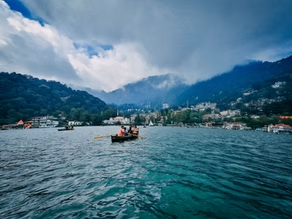
Nainital, also known as the “lake district of India” is a resort town located in the Kumaon region of Uttarakhand. One of the best hill stations famous for its beautiful lakes, verdant green hills, mesmerizing viewpoint, and a favorable climate throughout the year. This beautiful place is nothing short of wonder and has a great history of attracting tourists from all over the world. With so many places to visit, it is quite easy to plan a trip to Nainital. How to reach: By Air: The Pant Nagar Airport, located 72 km away is the nearest airport to Nainital and is well connected by motorable roads. By Rail: The Kathgodam Railway Station, located 41 km away is the nearest Railway Station to Nainital and is well connected to major destinations in India by Railway networks. By Road: Nainital is well-connected by motorable roads to all the major destinations in India. You can take a bus or hire a taxi to Nainital. Here are some of the must-visit places in Nainital you can’t miss. 1. Nainital Lake Nainital lake is a kidney-shaped lake situated in the Kumaon region in Nainital city. The whole city of Nainital flourishes around the lake. Present amidst the city of Nainital, it is a splendid natural freshwater lake. It also offers various water sport activities. Surrounded by 6-7 Himalayan peaks on all sides, it provides a breathtaking view especially during sunset and early morning. Adjacent to the lake is the famous Naina Devi Temple. 2. Snow View Point At an altitude of 2,270 m, Snow View point lives up to its name by giving a panoramic view of the hilltops and snowboarded peaks from one point and an eagle’s view of Nainital city and Naini lake from another. It’s a paradise for trekkers. One can catch a glimpse of the bordering Tibetan peaks with small monasteries and temples. Watch the shimmering and magnificent Nanda Devi peak from here. 3. Naina Peak Naina peak is the highest peak in Nainital. It is also called China Peak. A look towards it from the city just enthralls the mind of the visitor. At a height of 2615 m, it often remains covered by coniferous trees and blanketed by snow and clouds. This deadly combination makes a picturesque destination. Throughout the way, you will be surrounded by Deodar, Spruce, Pine trees, and rhododendron shrubs making for an exquisite photography experience. 4. Tiffin Top Located on top of Ayarpatta Hill of Nainital, one can get a complete view of Nainital and surrounding hills of the Kumaon region from the Tiffin top. Often people visiting the place spend some time viewing the scenic beauty while enjoying their meal from which it derives its name. It is called Dorothy’s Seat as it was made by a British army officer in memory of his wife Dorothy Kellett. It serves as a fantastic picnic spot. It is a noteworthy place to visit by nature lovers and photographers. Its serenity and peacefulness attract tourists to the spot. 5. Land’s End Loftily overlooking the vast valley and Khurpa Tal is this scenic spot called the Land’s End. Watch each step you take. One can see the Nainital city shimmering at a distance. Khurpa Taal and the plains make for a majestic view that is jaw-dropping yet serene. It is less crowded than other peaks. You can literally see cliffs dusted by snow from here. The hike is steep making it a must-go for hikers and adventure seekers. 6. Eco Cave Gardens Eco Cave Gardens are a series of interconnected caves and hanging gardens in Mallital, Nainital. It has been set up to give the tourist a natural landscape glimpse of the Himalaya and Himalayan ecosystem. They have set up caves and flora in line with the endangered species of the Himalayas. The whole experience is to make us accustomed to the livelihood of the fauna and help conserve them. Top it all with an audio-visual experience of musical fountain in the evenings about various species and their ecosystem making it a visual and intellectual learning delight. 7. High Altitude Zoo Located at a height of 2100 m makes it only one of its kind, It is home to several endangered species. The zoo is managed by the entry fees fund and The Bharat Ratna Pt. G.V. Pant High Altitude Zoo Management Society. The zoo offers many outreach programs to make people aware of the wildlife and habitat preservation of the Himalayas. Major wildlife spotted here are Sambar, Himalayan Black Bear, Himalayan Civet, Leopard, Tibetan Wolf, Barking Deer, Royal Bengal Tiger, Pheasant amongst many others. Being a major wildlife hotspot in a scenic location attracts tourists. 8. Khurpa Tal Nestled in the Kumaoni mountain range of the Himalayas, Khurpa Taal Lake is a bluish-green lake in the town of Khurpataal. It is 12 km from Nainital and a 15 minutes drive. It provides a great ambiance with sky-high trees and lush green forests surrounding it. It offers a gorgeous vista of the mountains. Away from the crowds of Nainital, this place provides serenity. It is also called angler’s paradise due to a good harvest of fishes. One can opt for boating in the lake and enjoy the pristine clear waters firsthand. 9. Kainchi Dham Situated in between two hills that cut and cross each other forming a scissor-shape, hence the place is named Kainchi (Hindi name for scissors) Dham. The magnificence of the surroundings adds to the beauty of the place. It is a combination of Ashram and Hanuman temple that attracts visitors. It achieved recognition due to the ashram of a saint named Neem Karoli Baba. It is a lethal formulation of scenic beauty, peace, and spirituality attracting many tourists year-round. 10. Nainital Ropeway Nainital Rope-way ride is the most popular tourist attraction in the city. one can have a
10 MUST DO TREKS IN UTTARAKHAND FOR A THRILLING EXPERIENCE!
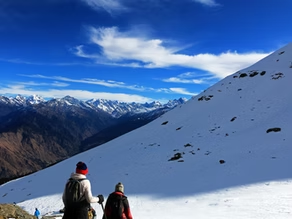
Uttarakhand also referred to as “Devbhumi – Land of Gods” is very popular among travelers. This beautiful Indian state is not only known for the numerous majestic temples it offers. Like other states in North India, Uttarakhand is also a land for trekking enthusiasts. From Long and difficult to short and easy Uttarakhand provides you with various exhilarating treks and hikes. Here are some of the must-do treks in Uttarakhand: 1. Kedarkantha Trek 2. Har ki Doon Trek 3. Valley of Flowers Trek 4. Kuari PassTrek 5. Rupin Pass Trek 6. Brahmatal Trek 7. Chandrashilla Trek 8. Bali Pass Trek 9. Auden’s Col Trek 10. Kedartal Trek 1.Kedarkantha Trek Kedarkantha trek is the most popular and beautiful trek in Uttarakhand. The Kedarkantha peak is one of the most famous snow-trekking destinations in India, decorated with a flabbergasting eminence of falling snow and lined with pine trees. During this trek, you will explore the magnificent views of the snow-covered Himalayas, the verdant greenery, lavish scenes, a bunch assortment of vegetation, and frozen lakes. Maximum Altitude: 12,500 Ft Distance: 20 Km Duration: 6 Days Difficulty level: Easy-Moderate The best time for the Kedarkantha trek is from December to April, the peak is covered in thick layers of snow. 2. Har ki Doon Trek Want to explore the untouched beauty of the Gharwal Himalayas? Har ki Doon trek is just perfect for you. Also known as the hanging valley with a mesmerizing beauty, this trek takes you through the untouched and unexplored regions on the Gharwal Himalayas. The highlights of this trek are the enthralling views of the Swaragarohini peak also known as the mythical stairway to heaven, Kala nag (the black peak), Bandarpooch, and many more. This is an easy trek, ideal for beginners. Maximum Altitude: 11,675 Ft Distance: 47 Km Duration: 6-7 Days Difficulty level: Easy-Moderate The best time for the Har ki Doon trek is from April to June and September to December. You can enjoy a snow trek from December to April. 3. Valley of Flowers Trek The trek to Valley of flowers, a UNESCO world heritage site is one of the easiest treks in Uttarakhand. The stunning showcase of around 300 different types of wildflowers, like the blue Primula, saxifrages, dog flower, and many more is a major attraction of this trek. One can also discover an assortment of uncommon and jeopardized animals like Asiatic mountain bears, brown bears, snow panthers, blue sheep, etc. With the setting of the mountains and the picturesque path, you will feel as you have unquestionably arrived in the land of fairies. Maximum Altitude: 14,200 Ft Distance: 37 Km Duration: 4-5 Days Difficulty level: Easy The best time for the Valley of flowers trek is during monsoons in June to October. 4. Kuari Pass Trek The Kuari pass trek is the best trek for beginners. One of the most magnificent adventurous treks that takes you deep into the Gharwal Himalayas with the incredible views of Himalayan peaks. This trek lets you explore the impressive skyline of these majestic mountains from a striking distance. The trek passes through dense oak and rhododendron forests and rich Himalayan Meadows called ‘Bugyals’. Maximum Altitude: 12,710 Ft (approx.) Distance: 30 Km Duration: 5-6 Days Difficulty level: Easy-Moderate The best time for the Kuari Pass Trek is from December to March, the entire trail is covered in snow. 5. Rupin Pass Trek Rupin Pass trek is another beautiful trek that takes you through the unexplored regions of the Gharwal Himalayas. This trek is one of its kind, it starts in Uttarakhand and ends in Himachal Pradesh. The Rupin Pass Trek is a difficult one, but the beauty of the place makes it worth it. Throughout the trail, you will witness the enthralling scenery, verdant meadows, snow-capped mountains, and thousands of waterfalls flowing down. Maximum Altitude: 15,250 Ft (approx.) Distance: 52 Km Duration: 8 Days Difficulty level: Moderate-Difficult The best time for the Rupin Pass Trek is from May to June and September to October. 6. Brahamatal Trek The Brahamatal trek is a great and challenging winter trek for adventure seekers. Snuggled in the midst of the Himalayas, the Brahamatal trek gives you a chance to witness the picturesque beauty of the snow-capped mountains and valleys. The trail passes through dense forests of fir, Rhododendron, and Oak. One can also witness the little villages, the rare flora and fauna, and streams flowing. Maximum Altitude: 12,200 Ft (approx.) Distance: 24 Km Duration: 6 Days Difficulty level: Moderate The best time for the Brahamatal Trek is during the winter season i.e., December to February. 7. Chandrashilla Trek The Chadrashilla Trek is one of the easiest treks in Uttrakhand. It is famous for offering a scenic 360-degree view of the mesmerizing Himalayan ranges. The trek takes you through the lush green meadows, oak and deodar forests, and the holy Tugnath temple. This trek is perfect for adventure-seekers and nature lovers in search of peace. Maximum Altitude: 12,083 Ft (approx.) Distance: 5 Km Duration: 3-4 Days Difficulty level: Easy-Moderate The best time for the Chandershilla Trek is also during the winter season i.e., December to February. 8. Bali Pass Trek Want to trek through a different and less traveled path? The Bali pass trek is for you. The trek is a difficult one meant for experienced trekkers. It challenges the trekkers inside and out through definitely evolving landscapes, narrow paths, and long hours of strolling. This trek holds the glorious vibes inside that will give you an extraordinary experience. Maximum Altitude: 16,200 Ft (approx.) Distance: 60 Km Duration: 8 Days Difficulty level: Difficult The best time for the Bali pass Trek is from May to June and September to October. You can go on a snow trek from December to February. 9. Auden’s Col Trek Auden’s Col trek is one of the most difficult treks in India due to which it is also the

